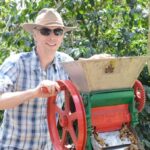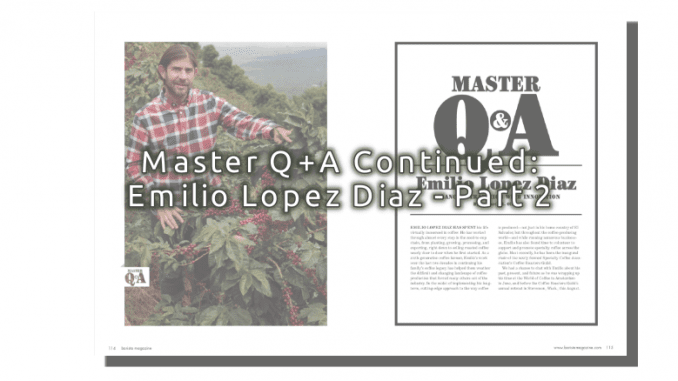
We were lucky enough to interview El Salvador’s multi-talented Emilio Lopez Diaz—coffee producer, retailer, roaster, and so much more—for the Master Q + A feature in the August + September 2018 issue of Barista Magazine. As often happens when we talk to longtime coffee professionals, they have so much more to share than we have room to print in the magazine. Today we continue our Master Q + A session with some of the great stuff that didn’t make it to print. This is Part 2 of our continued conversation; you can find Part 1 here.
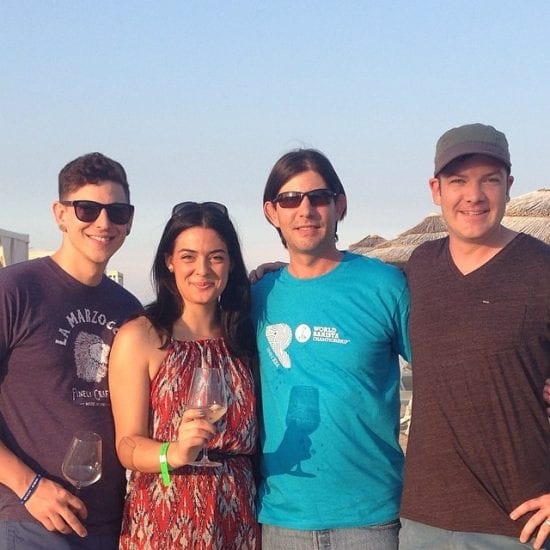
Kenneth R. Olson: You’ve worked closely with barista competitors in the past, like France’s Charlotte Malaval and Laila Ghambari from the U.S.A. What do you find rewarding about working with baristas? What does it feel like to see them compete at the World Barista Championship (WBC) with one of your coffees?
Emilio Lopez Diaz: This is really one of the things I enjoy very much doing, but it’s one of the things also that I like to do just right. The first barista that I worked with was Craig Simon back in 2011; I was actually lying in a hammock at the beach, when a coffee friend texted me and said, “Hey, someone is using your coffee in the Australian barista championships.” I immediately logged into the live streaming and saw the very last minute of Craig Simon’s performance—that year he got third place I think. The next day after the competition I emailed him and invited him to El Salvador, and six months later he came down and started working on his coffees and routine for the 2012 Australian championship. He came at the heart of the coffee harvest, so we might have cupped about 250 coffees, tasted more than 100 espressos, and played also with different processes and fermentations.
Craig went on to win the 2012 Australian National Barista Championship and off we headed to Vienna that same year for the Worlds. I had been to many competitions before, but I had never been that close to them, being backstage and getting to know many of the competitors. That year unfortunately we did not make it to the finals, but the experience and what I learned from the whole process was incredible.
The next year I worked with someone locally in El Salvador, with David Mendez, who used a Yellow Bourbon and went on to win the 2013 El Salvador Championship. At that competition I met Francesco Sanapo (the multi-time Italian barista champion), who was one of the judges and went out looking for me after tasting the Yellow Bourbon. Francesco and I have since established a pretty cool relationship together and I have great respect for him.
In 2013 the WBC was held in Australia, and there our coffee was used by Jordi Mestre, the barista champion from Spain; we were not able to make it to the semis, but that also just helped me to keep gaining experience in the competition.
It wasn’t until the end of 2013 that we were approached again by someone that really had a game plan on using our coffee to qualify for their national championship and then take it to the Worlds. So that year we began working with Laila Ghambari and Phil Beattie (from Dillanos Coffee Roasters) to prepare for the 2014 U.S. Barista Championship (USBC) and WBC. They both came down to El Salvador, and together we all selected the coffees we wanted to use. Phil worked his magic on roasting the coffees, and then Laila knocked it out of the ballpark at the USBC competition. We won the 2014 USBC, and off we went to Rimini, Italy, as a team (for the WBC). Rimini was incredible of course, but what really stood out for me on that trip was the chance I had not only to be backstage prepping and tasting the espressos and capps, but most importantly I got to see and understand how the scoring system worked and in which things we did a good job and in which we didn’t. We did make it to the semis, not to the finals, but as a team we had a blast and a great 2014: USBC champs and semifinalists at the Worlds.
A few months after Rimini, my friend Francesco was calling me saying he had discovered a French barista that he was going to train and needed the Yellow Bourbon he had tasted before. The French barista happened to be the incredible Charlotte Malaval, who went on to win the French 2015 championship, and we began immediately preparing for Seattle’s 2015 WBC. Francesco came to El Salvador and together we chose and suggested the coffees for Charlotte to use. We came together as a team in Seattle, made it to the semis, and then to the finals! Sixth place it was. First time for Charlotte competing and she got sixth place—of course, [it was] a great coach, a great competitor and a great coffee combined.
The last competition I participated in with our coffee was for the 2016 Dublin WBC and was again with Charlotte and Francesco, but this time also with the help of (2013 World Barista Champion) Hide Izaki. Charlotte and Hide came down to El Salvador for a little over a week and, similar to previous times, we got to roast, cup, and brew espressos over and over until we found the one for competition. This time again, we made it the semis, then the finals, and finished fifth.
So going back to your question, what do I find rewarding? It’s got to be to work as a team throughout the whole process, selecting the coffees, roasting, cupping, brewing and then presenting them well at the world stage, and of course, the relationships that come out of this is also invaluable.
I got to be honest though, every time I’m there either backstage, or cheering for the competitor in the finals, I say to myself, “Next year, I’ll ask the competitor to train me and compete myself.” One day maybe.
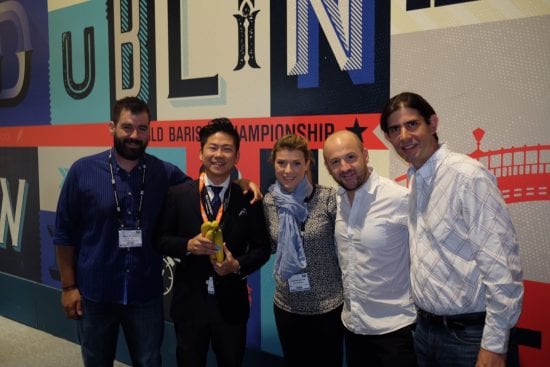
KRO: You’re currently serving as Chair of the Coffee Roasters Guild (CRG). What has been your role in the transition from two separate guilds in the U.S. and Europe to one unified guild? Why is this unification a good thing, in your opinion?
ELD: The process of unification began the moment the Specialty Coffee Association of America (SCAA) and the Specialty Coffee Association of Europe (SCAE) voted to unify. We as volunteers needed to make sure that the interests of our constituency were well protected and represented in the process.
I was chairing the (American) Roasters Guild (RG) before unification, and my specific role was to first help put together a unification committee consisting of three people from the RG and three from the Roasters Guild of Europe (RGE). I was one of the three from the RG side, and we went ahead and started forming the new Guild from scratch. The idea was to build something new, something that we would all feel a part of and try to move forward from the us-and-them conversations. So, new bylaws, new rules of procedure, and of course, a new name: the Coffee Roasters Guild. But when the time came to select the officer roles of the new advisory council, I stepped away from the unification committee and let the group decide without me being there.
The new advisory council consists in this transitional period of 12 members, of which six are from the heritage RG and six from the heritage RGE. Out of those 12, four of us are officers and eight additional voting members. I was chosen to be the Chair for the first year, followed by Sonja Grant as Vice-Chair, Jen Apodaca as Second Vice Chair and Konrad Oleksak as Past Chair. Officers have a one-year term and voting members have a two-year term; this September we’ll be having our first elections.
Great things are boiling up at the CRG planning center. Coming up we have Retreat at Skamania Lodge in Washington in August 2018. We then have Roasters Camp in Portugal this October 2018, the U.S. Sensory Summit in January 2019, for the first time a EU Sensory Summit also in 2019, and two origin trips also for 2019. The Guild currently has a great buzz and lots of members are asking us how to get involved. Also, other countries like Brazil and South Korea are reaching out for events in their countries. The Guild will now be truly a global guild, and that’ll bring a much broader approach to the craft of roasting.
I do hope I’m not remembered as the Chair that killed the RG, but the Chair that helped bring together both Guilds and created a global one. I want to make sure, that the vision and love for the Guild that my predecessors had continues to live in the Coffee Roasters Guild. Legends like Geoff Watts, Peter Giuliano, Paul Thornton, Chris Schooley, Phil Beattie, Mary Tellie, and other Chairs have a big influence in my way of leading the Guild, and I hope I can keep building something they will appreciate also.
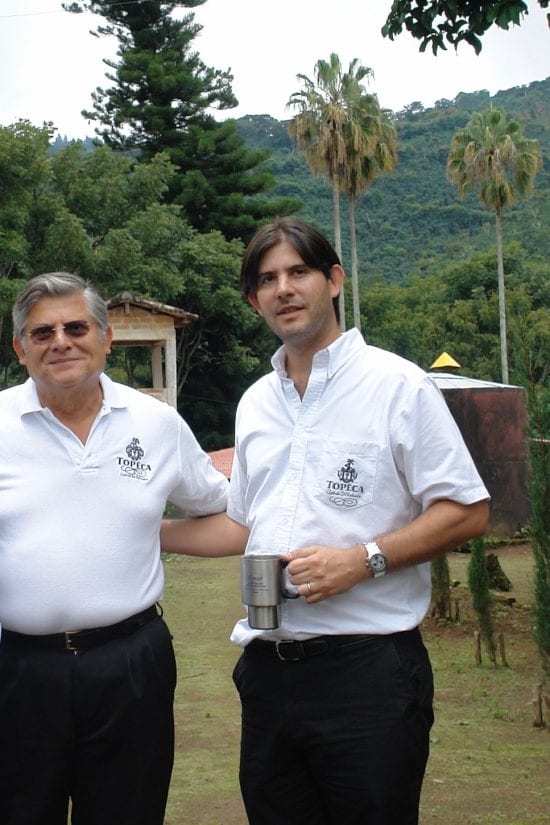
KRO: Finally, can you tell us a little about any people or company in your life that have inspired or influenced you?
ELD: First of all, my parents—both of them have encouraged and guided me ever since I can remember. It was from my dad, also named Emilio, that I learned to love working, to never give up, to be patient for things that I want to accomplish, and to be grateful to life. From mom, Margarita, on the other end, I learned to fight for what I believe, to set my goals, and to always look up to the horizon.
From the people in the industry that I admire, there is one person that I really have to thank, ’cause he was pretty much the first one that truly believed and trusted me to supply him with coffee—Chris Davidson from Atlas Coffee. He challenged me to do better coffees and to get better at it.
Companies that I admire definitely include Intelligentsia, Stumptown, Counter Culture, and Blue Bottle. One that I’ve been near to from the very beginning and have seen up close their success and growth is Dillanos—talk about efficiency and productivity! I’m a big fan.
Operations that are similar to ours, that I look up to, and that have gone through almost the same struggles, I think of Hacienda San Pedro from Puerto Rico: hurricanes, generational changes, an origin also similar to El Salvador that has decreased production incredibly. The Atienza family are coffee warriors and visionaries; Rebecca and Roberto have the passion and love for coffee that is required to overcome the worst of the problems in this industry.

